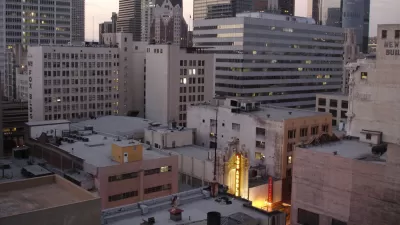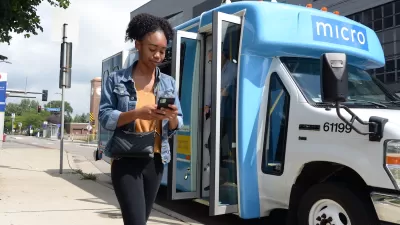Today, most transportation professionals are aware that the era of inexorable growth in vehicular travel has ended. Yet many state DOTs and local public works departments continue to assume that traffic will grow far into the future.
Next time you attend a public workshop on a proposed road or street project, ask the project engineer how the traffic forecasts were prepared. The answer will usually be that forecasts of local traffic growth (based on land use forecasts) were added to a “background” or “regional” traffic growth factor. Ask what that that background growth factor is and the answer most often will be 2 – 3% per year.
How reasonable is that? Let’s take a look.
While overall VMT nationwide has declined by 2% since 2006, the decline has not yet cancelled out the growth that occurred during the first six years. So the twelve-year trend was a net 8% – about 0.67% annually. At the state level in the Rocky Mountain West, states experienced growth in total VMT from 2000 to 2012, while Colorado and Wyoming saw declines during the last six years of that period. The decline nationally since 2006 has been widely reported by the media. However, highway advocates counter that this decline was due to temporary factors associated with the Great Recession coupled with rising fuel costs and should not be viewed as a long term trend.
But there is more to the story.
FULL STORY: Under Construction: Road upkeep in an era of diminishing vehicular travel

Planetizen Federal Action Tracker
A weekly monitor of how Trump’s orders and actions are impacting planners and planning in America.

Congressman Proposes Bill to Rename DC Metro “Trump Train”
The Make Autorail Great Again Act would withhold federal funding to the system until the Washington Metropolitan Area Transit Authority (WMATA), rebrands as the Washington Metropolitan Authority for Greater Access (WMAGA).

The Simple Legislative Tool Transforming Vacant Downtowns
In California, Michigan and Georgia, an easy win is bringing dollars — and delight — back to city centers.

The States Losing Rural Delivery Rooms at an Alarming Pace
In some states, as few as 9% of rural hospitals still deliver babies. As a result, rising pre-term births, no adequate pre-term care and harrowing close calls are a growing reality.

The Small South Asian Republic Going all in on EVs
Thanks to one simple policy change less than five years ago, 65% of new cars in this Himalayan country are now electric.

DC Backpedals on Bike Lane Protection, Swaps Barriers for Paint
Citing aesthetic concerns, the city is removing the concrete barriers and flexposts that once separated Arizona Avenue cyclists from motor vehicles.
Urban Design for Planners 1: Software Tools
This six-course series explores essential urban design concepts using open source software and equips planners with the tools they need to participate fully in the urban design process.
Planning for Universal Design
Learn the tools for implementing Universal Design in planning regulations.
Smith Gee Studio
City of Charlotte
City of Camden Redevelopment Agency
City of Astoria
Transportation Research & Education Center (TREC) at Portland State University
US High Speed Rail Association
City of Camden Redevelopment Agency
Municipality of Princeton (NJ)





























